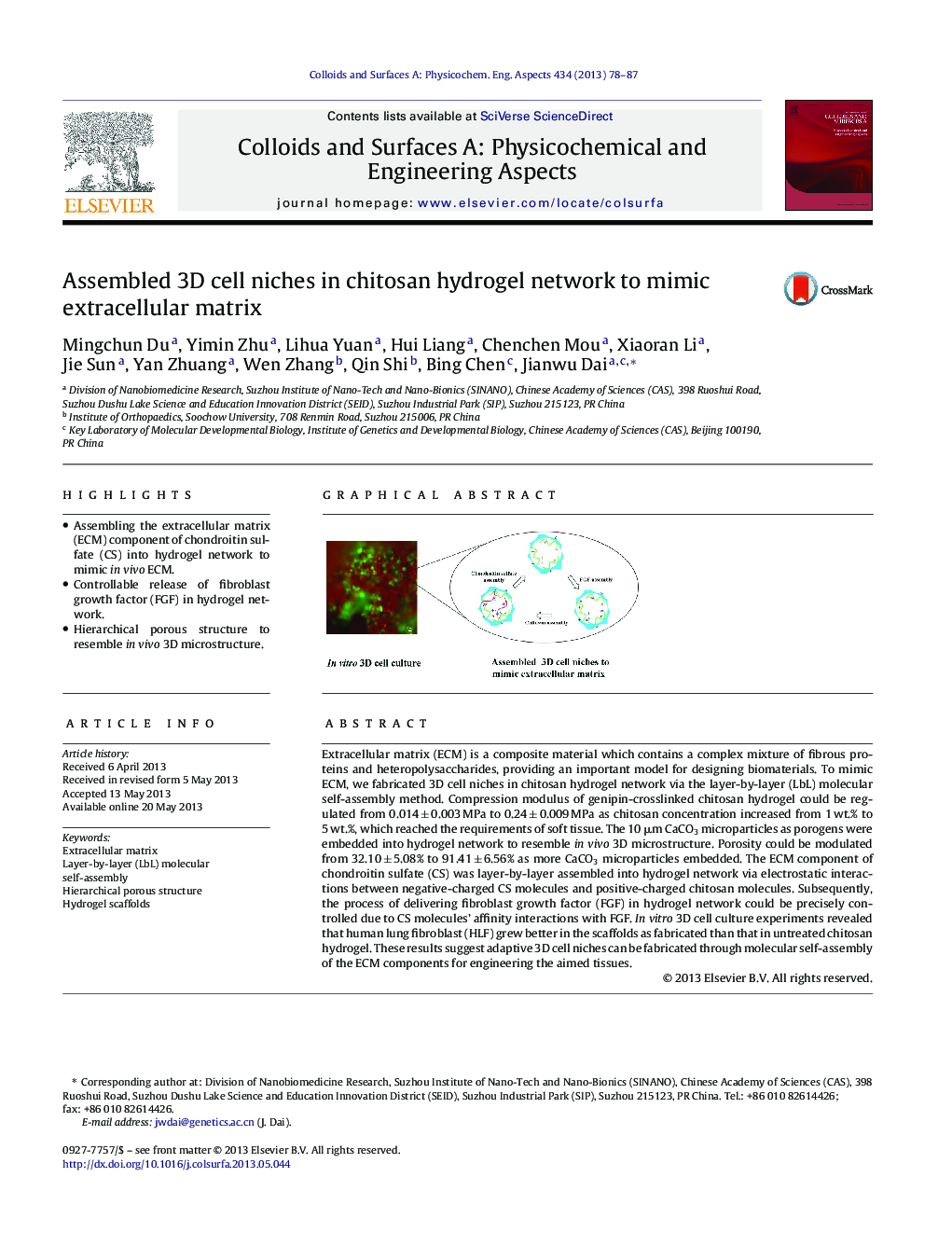| Article ID | Journal | Published Year | Pages | File Type |
|---|---|---|---|---|
| 593428 | Colloids and Surfaces A: Physicochemical and Engineering Aspects | 2013 | 10 Pages |
•Assembling the extracellular matrix (ECM) component of chondroitin sulfate (CS) into hydrogel network to mimic in vivo ECM.•Controllable release of fibroblast growth factor (FGF) in hydrogel network.•Hierarchical porous structure to resemble in vivo 3D microstructure.
Extracellular matrix (ECM) is a composite material which contains a complex mixture of fibrous proteins and heteropolysaccharides, providing an important model for designing biomaterials. To mimic ECM, we fabricated 3D cell niches in chitosan hydrogel network via the layer-by-layer (LbL) molecular self-assembly method. Compression modulus of genipin-crosslinked chitosan hydrogel could be regulated from 0.014 ± 0.003 MPa to 0.24 ± 0.009 MPa as chitosan concentration increased from 1 wt.% to 5 wt.%, which reached the requirements of soft tissue. The 10 μm CaCO3 microparticles as porogens were embedded into hydrogel network to resemble in vivo 3D microstructure. Porosity could be modulated from 32.10 ± 5.08% to 91.41 ± 6.56% as more CaCO3 microparticles embedded. The ECM component of chondroitin sulfate (CS) was layer-by-layer assembled into hydrogel network via electrostatic interactions between negative-charged CS molecules and positive-charged chitosan molecules. Subsequently, the process of delivering fibroblast growth factor (FGF) in hydrogel network could be precisely controlled due to CS molecules’ affinity interactions with FGF. In vitro 3D cell culture experiments revealed that human lung fibroblast (HLF) grew better in the scaffolds as fabricated than that in untreated chitosan hydrogel. These results suggest adaptive 3D cell niches can be fabricated through molecular self-assembly of the ECM components for engineering the aimed tissues.
Graphical abstractFigure optionsDownload full-size imageDownload as PowerPoint slide
